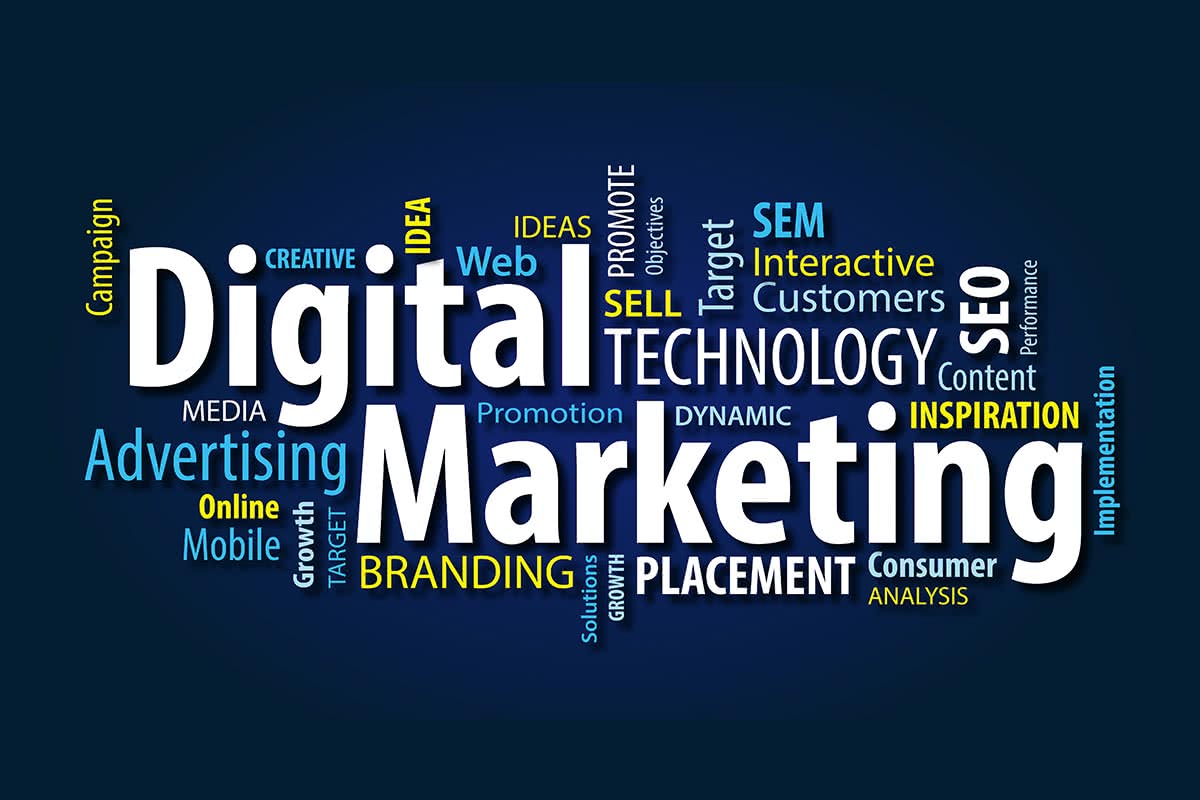In today’s fast-paced world, businesses are evolving at lightning speed. Gone are the days when traditional marketing methods ruled the roost. Enter digital marketing—a dynamic force reshaping how companies connect with consumers and build their brands. As technology advances, so does the landscape of business strategies. Digital marketing isn’t just a trend; it’s a fundamental element that can make or break a company in this competitive arena.
From social media campaigns to targeted ads, digital marketing empowers businesses to reach wider audiences and engage customers like never before. This article delves into the pivotal role of digital marketing in modern business strategies, exploring its evolution, key components, and real-world applications that drive success in today’s marketplace. Buckle up as we uncover how embracing digital can revolutionize your approach to reaching customers!
The Evolution of Business Strategies with the Rise of Digital Marketing
The rise of digital marketing has fundamentally transformed business strategy. Gone are the days when companies relied solely on traditional advertising methods.
With the advent of social media, email campaigns, and search engine optimization, brands have shifted their focus to online platforms. This change allows for real-time engagement with consumers, fostering more profound connections.

Data-driven insights now guide decisions rather than gut feelings. Businesses can analyze consumer behavior patterns and tailor their offerings accordingly.
Moreover, competition has intensified as more players enter the digital space. Companies must continuously innovate to stand out in a crowded marketplace.
This evolution also emphasizes personalization. Brands leveraging technology to create customized experiences often have higher customer satisfaction rates.
As digital marketing evolves, so will business strategies that aim for growth and sustainability in this dynamic landscape.
Critical Components of a Successful Digital Marketing Strategy
A successful digital marketing strategy integrates several vital components that work harmoniously together.
First, understanding your target audience is crucial. Knowing their preferences and behaviors allows for tailored messaging that resonates.

Next, creating high-quality content effectively engages users. Content should be informative, entertaining, and relevant to foster brand loyalty.
SEO plays a vital role in visibility. Optimizing website elements helps attract organic traffic through search engines.
Social media presence must also be noticed. Platforms like Instagram and Facebook provide direct engagement opportunities with consumers.
Email marketing remains effective, too. Personalized campaigns can nurture leads and build lasting relationships with customers.
Measuring success through analytics helps refine strategies over time. Tracking metrics ensures continuous improvement in performance and reach within the digital landscape.
The Impact of Social Media on Consumer Behavior and Brand Awareness
Social media has transformed the way consumers interact with brands. Platforms like Instagram, Facebook, and TikTok create a space where products can be discovered, discussed, and shared instantly.
User-generated content plays a pivotal role in shaping consumer perceptions. When customers share their experiences online, they provide authentic endorsements that traditional advertising can’t replicate.
Moreover, social media enables real-time feedback. Brands can respond to inquiries or address concerns immediately. This interaction fosters trust and builds loyalty among followers.
Visual storytelling is another powerful tool for brand awareness on these platforms. Compelling images and videos capture attention quickly and convey messages effectively.
Trends spread rapidly through shares and likes, influencing purchasing decisions almost overnight. The viral nature of social content means that even small businesses have the potential to reach vast audiences without significant investment.
Understanding this dynamic landscape is essential for any brand aiming to thrive in today’s market ecosystem.
Utilizing Data and Analytics for Targeted Marketing
Data and analytics have revolutionized the way businesses approach marketing. By leveraging these powerful tools, companies can identify consumer behavior and preferences patterns.
Understanding who your audience is allows for personalized messaging. This targeting fosters more profound connections with potential customers, enhancing engagement rates and conversions.
Moreover, real-time data enables marketers to adjust strategies on the fly. If a campaign isn’t performing well, insights gathered from analytics reveal opportunities for improvement almost instantly.
Segmentation also plays a crucial role in targeted marketing. By dividing audiences into specific groups based on demographics or interests, brands can tailor content that resonates more effectively.
Combining all this data creates a feedback loop; richer insights emerge as more campaigns run. The end goal? A finely-tuned approach that meets customer needs while driving business success.
Mobile Optimization and its Significance in the Digital Age
Mobile optimization has become crucial in today’s digital landscape. With more consumers accessing the internet via smartphones, businesses must adapt their strategies to cater to this audience.
A mobile-optimized website ensures a seamless user experience. Fast loading times and responsive design keep visitors engaged. It is essential, as users quickly abandon sites that don’t function well on their devices.
Search engines prioritize mobile-friendly websites, too. Google, for instance, uses mobile-first indexing. Your site’s mobile performance can impact its ranking in search results.
Additionally, effective mobile optimization enhances conversion rates. Simplified navigation and clear calls to action encourage users to complete purchases or fill out forms quickly.
With social media usage soaring on mobiles, integrating marketing efforts across platforms amplifies brand visibility. Focusing on mobile strategies helps companies stay relevant in an ever-evolving market.
Challenges and Risks of Digital Marketing in Business Strategies
Digital marketing has its challenges. One significant risk is the ever-changing landscape of technology and consumer preferences. Staying current requires businesses to adapt quickly, which can strain resources.

Another major challenge is data privacy concerns. With regulations like GDPR, companies must navigate complex laws while still delivering effective campaigns. Missteps can lead to hefty fines and damage to a brand’s reputation.
Moreover, competition in the digital space is fierce. Brands often struggle to stand out amidst a sea of content, making it crucial to create unique value propositions that resonate with consumers.
Managing online feedback presents another layer of complexity. Negative reviews or comments can spread rapidly across social media platforms, instantly impacting public perception. Businesses need reputation management strategies to mitigate these risks effectively.
Integrating Traditional and Digital Marketing Tactics for Maximum Impact
Integrating traditional and digital marketing tactics can create a powerful synergy for brands. By combining the reach of conventional media with the precision of digital platforms, businesses enhance their visibility.
Traditional marketing methods, such as print ads or television spots, lay the groundwork. They offer credibility and familiarity that many consumers appreciate. Meanwhile, digital channels allow for real-time engagement and targeted campaigns.
For example, using QR codes in print materials bridges offline experiences with online interactions. This tracks engagement and directs traffic to social media or websites.
Additionally, hosting events can be promoted through both flyers and social networks. This dual approach amplifies outreach while fostering community connections.
The key is to maintain consistent messaging across all platforms. When traditional meets modern seamlessly, brands capture attention more effectively and cultivate lasting relationships with their audience.
Case Studies: Digital Marketing
Case studies offer valuable insights into the effectiveness of digital marketing. Brands across various industries have implemented innovative strategies that showcase the power of this approach.
For instance, a well-known footwear company leveraged social media platforms to launch an engaging campaign centered around user-generated content. By encouraging customers to share photos of their products, they not only boosted engagement but also created a sense of community around their brand. This strategy led to a significant increase in sales and improved customer loyalty.
Another case highlights how a tech startup utilized targeted email marketing campaigns. They achieved impressive open and conversion rates through meticulous segmentation and personalized messaging. This focused approach allowed them to nurture leads effectively, transforming prospects into loyal customers.
An established retail giant adopted influencer partnerships as a digital marketing strategy. Collaborating with popular influencers enabled them to reach younger audiences authentically. The results were evident: increased brand visibility and enhanced credibility within target demographics.
These examples illustrate how diverse businesses tap into digital marketing’s potential for growth and success. Each unique approach provides lessons on creativity, adaptability, and understanding consumer needs in today’s fast-paced marketplace.
Digital marketing is more than just a trend—it’s an essential element shaping modern business strategies for brands seeking to thrive in the digital era.

